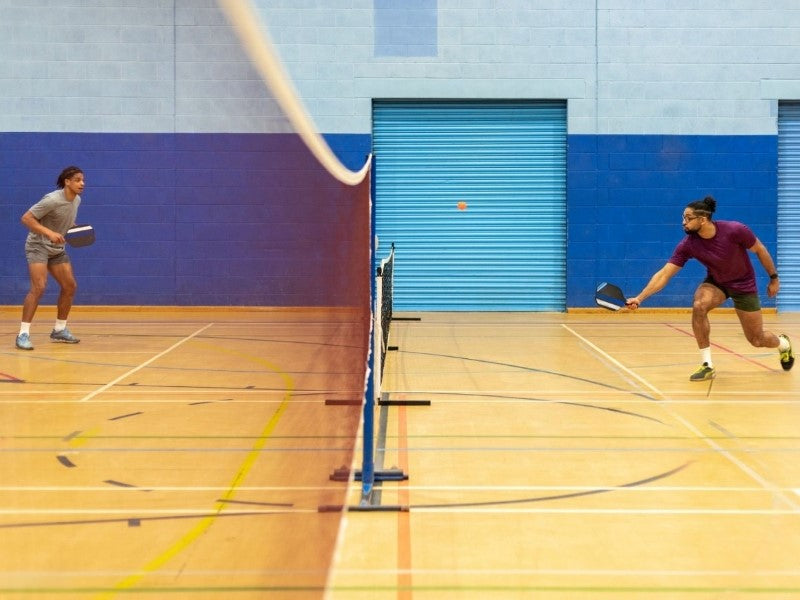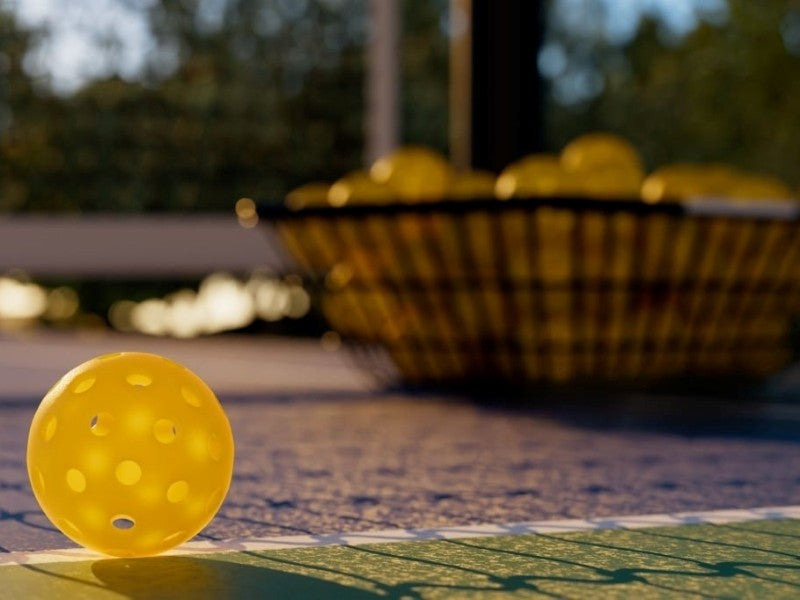Pickleball has exploded in popularity over the past decade, becoming one of the fastest-growing sports worldwide. While many players focus on paddles, courts, or rules, one essential element often gets overlooked: the pickleball itself. The type of ball you use directly affects your game experience—impacting everything from ball speed and bounce to control and durability.
Whether you're a casual player enjoying weekend games or a serious competitor preparing for tournaments, understanding what type of ball is used in pickleball and how different balls perform in various conditions is crucial.
The Evolution of the Pickleball Ball
Pickleball originated in 1965 on Bainbridge Island, Washington, as a family game using simple wooden paddles and makeshift balls, such as wiffle balls. Early balls were often inconsistent in size, weight, and flight characteristics, which made gameplay unpredictable.
By the 1980s and 1990s, the sport saw commercialization and formalization of rules under organizations like the USAPA (USA Pickleball Association). Manufacturers began producing balls specifically designed for pickleball—usually made of plastic polymers with standardized size, weight, and hole patterns. Modern pickleballs are precision-engineered using advanced molding techniques to ensure consistent performance, durability, and compliance with official standards.
Official Specifications for a Pickleball Ball
The USA Pickleball Association (USAPA) sets strict specifications for pickleballs used in sanctioned tournaments, ensuring fairness and uniformity. These specs are essential for manufacturers and consumers alike.
|
Specification |
Requirement |
|
Diameter |
2.87 to 2.97 inches (73 to 75 mm) |
|
Weight |
0.78 to 0.935 ounces (22 to 26.5 grams) |
|
Hole Count |
26 holes (indoor), 40 holes (outdoor) |
|
Bounce Height |
30 to 34 inches from a 78-inch drop |
|
Surface |
Smooth, no aggressive texturing |
|
Color |
Any solid color; bright/neon preferred for visibility |
Balls outside these specs may be used for recreational play but are disqualified from tournament use.
Why Ball Weight Variations Matter in Competitive Play

In competitive pickleball, a difference of just 0.02 ounces in ball weight can subtly affect shot timing, ball trajectory, and even endurance over the course of a match. Lighter balls tend to slow slightly in the air, allowing for higher arcs and more controlled dinks, while heavier balls penetrate the wind better but can fatigue the arm faster in long rallies. Professional players often measure and weigh new batches of balls before a tournament to ensure every ball in play offers the same kinetic response. This level of precision might seem extreme for recreational play, but at higher levels, it can be the difference between winning and losing.
Indoor vs Outdoor Pickleball Balls – Key Differences
One of the most critical decisions is choosing between indoor and outdoor pickleball balls. Each is designed for specific conditions and court types.
|
Feature |
Indoor Pickleballs |
Outdoor Pickleballs |
|
Material |
Softer polyethylene (PE) |
Harder polypropylene (PP) |
|
Hole Count |
26 larger holes |
40 smaller holes |
|
Weight |
Slightly lighter |
Slightly heavier |
|
Durability |
Less durable on rough surfaces |
More durable and crack-resistant |
|
Bounce |
Lower and more controlled |
Higher and faster |
|
Spin Potential |
Higher due to softer surface |
Moderate due to hard surface |
|
Wind Resistance |
Low; easily affected by wind |
High; designed to reduce wind interference |
|
Noise Level |
Quieter on gym floors |
Louder on hard courts |
Indoor Balls
Designed for smooth gym floors and indoor courts, indoor balls offer greater control and are easier to spin due to softer materials and fewer holes. They produce less noise and a slower, more controlled bounce.
Outdoor Balls
Outdoor balls have a harder shell to withstand rougher surfaces like asphalt and concrete. They feature more holes for better stability in wind and tend to bounce higher and move faster, creating a faster-paced game.
How a Pickleball Ball Is Made
Understanding the manufacturing process helps explain why different balls feel and behave differently.
Injection Molding
Most pickleballs are made using injection molding, where melted polymer is injected into a precision mold. This process ensures uniform size, weight, and hole placement.
Seamless vs Seamed Balls
· Seamless balls are molded as a single piece, offering better durability and more consistent flight.
· Seamed balls have a visible line where two halves join; they may be more prone to cracking and inconsistency.
Quality Control
Manufacturers conduct rigorous testing for weight, diameter, bounce height, and hole spacing to comply with USAPA standards. Premium brands invest heavily in maintaining tight tolerances to ensure top performance.
The Science Behind Performance
Several scientific factors influence how a pickleball performs on the court:
Bounce Height and Material Elasticity
The elasticity modulus of the polymer affects how much energy the ball returns after impact. Harder materials like polypropylene provide higher bounce, while softer polyethylene offers controlled bounce for precise shots.
Wind Resistance and Hole Design
The number and size of holes directly impact aerodynamics. More holes stabilize the ball’s flight in wind but can increase drag, affecting speed. Outdoor balls balance this by using 40 smaller holes.
Altitude and Climate Considerations for Ball Selection
Many players underestimate how much altitude and humidity impact ball performance. At higher elevations, reduced air density causes balls to travel faster and bounce higher, which is why some manufacturers produce “high-altitude” pickleball models with slightly thicker walls and lower bounce characteristics. In humid environments, the plastic can soften slightly, decreasing rebound speed.
Temperature Effects
Extreme temperatures influence ball hardness. Cold weather can make balls brittle and prone to cracking, while heat can soften materials, slightly altering bounce and speed.
How to Choose the Right Ball for Your Game
Match Ball Type to Your Playing Environment
· For indoor courts, choose softer balls with fewer holes for better control and quieter play.
· For outdoor play, select harder balls with more holes for durability and wind resistance.
Think About Your Playing Style
· Control-oriented players may favor balls that offer spin and softer bounce.
· Power players might opt for faster balls with higher bounce to capitalize on aggressive shots.
Budget and Availability
Buying in bulk usually saves money. Try different brands before committing to bulk purchases to find your preferred ball feel.
Consider Your Skill Level
Beginner players often benefit from softer, slower balls that give them more reaction time and reduce unforced errors, often indoor balls or softer outdoor variants. Intermediate players might prefer balls that balance control and speed, while advanced competitors tend to favor faster, harder balls for aggressive play. Some brands even design training balls specifically for skill development, featuring high-visibility colors or slightly altered weights. Matching the ball to your skill level can significantly improve your learning curve and game enjoyment.

Storage and Maintenance Tips
Proper care can extend your pickleball’s lifespan and performance:
· Avoid Exposure to Extreme Temperatures: Store balls indoors at room temperature. Avoid leaving them in cars or outdoor sheds.
· Keep Balls Dry: Moisture can degrade polymers over time. Store in a dry, breathable container.
· Rotate Balls: Using multiple balls alternately helps distribute wear evenly.
· Regular Inspection: Check for cracks, deformities, or significant wear, and replace when performance drops.
Future of Pickleball Balls
As pickleball continues its rapid growth, manufacturers are innovating to enhance performance and sustainability:
Eco-Friendly Materials
Research into biodegradable polymers aims to reduce environmental impact without sacrificing durability.
Smart Pickleballs
Emerging technology includes embedding sensors into balls to track spin, speed, and trajectory for training and broadcasting enhancements.
Customization and Branding
Manufacturers offer custom colors, logos, and limited editions to meet growing market demand.
Choosing the right pickleball ball is more than a minor detail—it influences your control, speed, durability, and overall enjoyment. Whether you play indoors or outdoors, casually or competitively, understanding what type of ball is used in pickleball helps you select equipment tailored to your needs.
Investing time in choosing the perfect ball pays dividends in improved gameplay and fewer disruptions from cracked or unsuitable balls. With continued innovation on the horizon, the future of pickleball balls promises exciting developments that will enhance every player’s experience.









Leave a comment
This site is protected by hCaptcha and the hCaptcha Privacy Policy and Terms of Service apply.